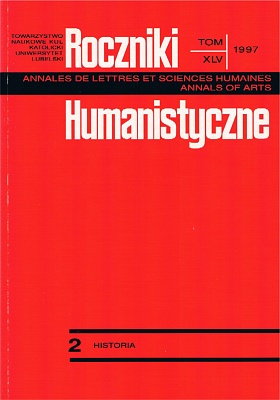Janów Miracula of the Years 1645-1814
Abstract
In the history of the Church the 17th c. is marked with the dominance of Marian cult, which was a reaction to the fact that the Protestants had questioned it. That age saw the establishment of many centres of the cult on a regional and local basis. One of them was Janów Lubelski, connected first with the place of Mary's visitations, then with the painting of Our Lady of Grace. The heirs of tail from the Zamoyski family, the owners of Janów, built here a church and brought the Order of Preachers who then took care about the sanctuary in the years 1660-1864. The Dominicans started recording the reports on favours for the sake of greater popularization of the cult. There are two versions of the miracula – one of which is in the archives of Dominican Fathers in Kraków, and the other in the Library of the Theological Seminary in Lublin.
An analysis of the notes found in the collection of miracula allows us to state that the scope of influence of the Janów centre encompassed a small area, in most cases 30 km. The clients of the Janów sanctuary were composed of representatives of all social states, however, the dominant group are the representatives of the middle-class. There is no lack of the clergy, either; there is a considerable percentage of the clergy, especially among the witnesses.
The largest number of pilgrimages fall on the years 1660-1680 and 1760-1790. This is due to the fact that at that time reports were gathered by the two main editors of the collection, Fr. Czesław Sulicki and Fr. Bruno Bogatko.
Most favours recorded in de miraculis pertain to healings; there is no lack of descriptions from everyday life. They bring the sorrows and problems of the man of old Poland home to us and account for his behaviour and religious attitudes. The miracula permit us to take a closer look at the forms of piety among the Janów clientele, expressed particularly in stressing the mediatory role of Mary. Owing to them, we may learn about the customs and habits of the pilgrims during their journey and in the sanctuary, their forms of prayer and votive practices. Most of those customs bear a universal character; we find them in the general current of old Poland religiousness, and some have remained to date.
Copyright (c) 1997 Roczniki Humanistyczne

This work is licensed under a Creative Commons Attribution-NonCommercial-NoDerivatives 4.0 International License.





